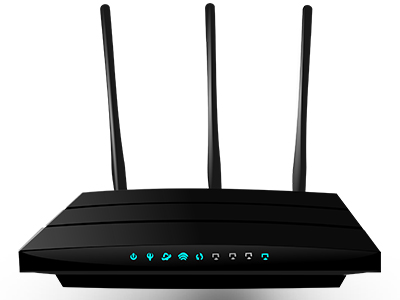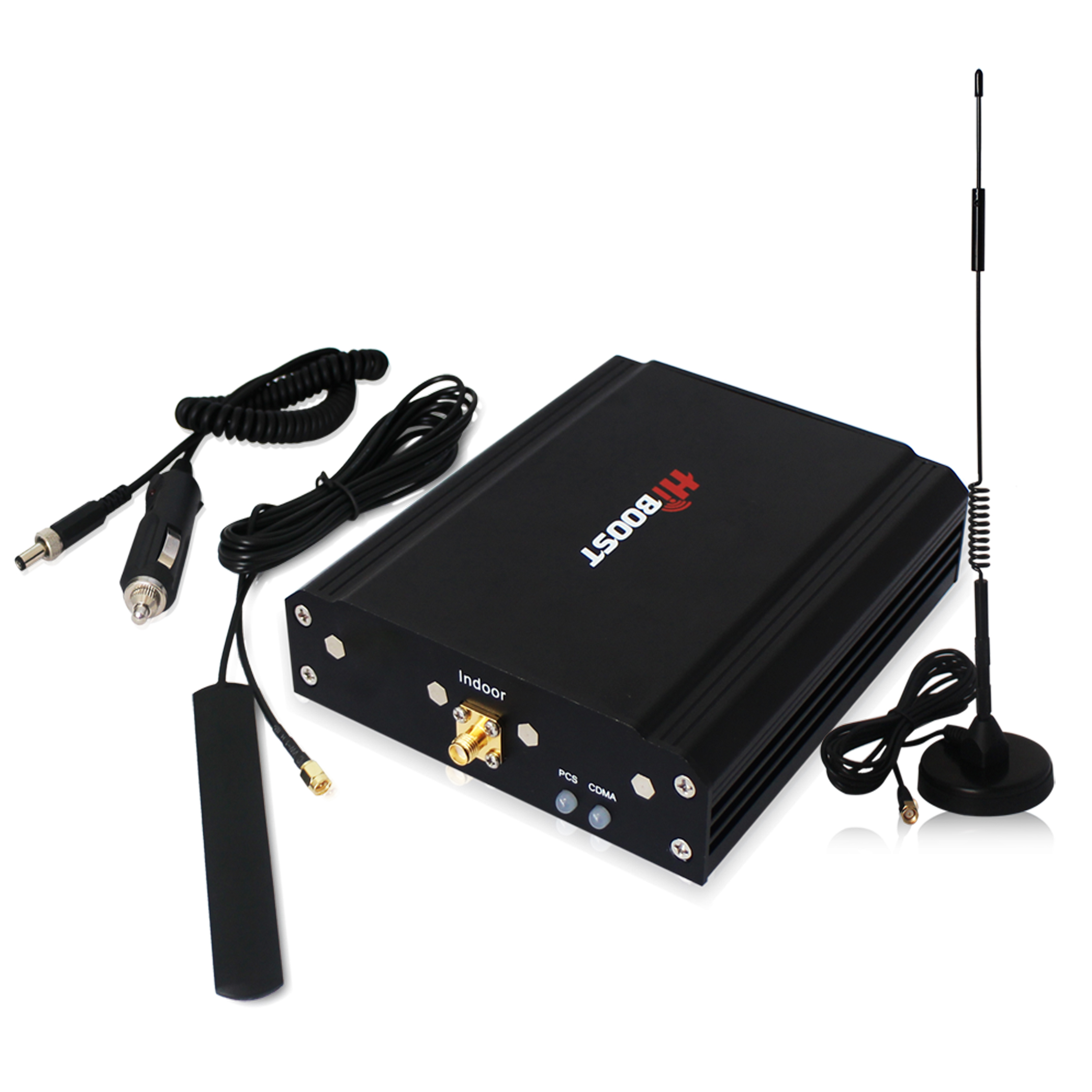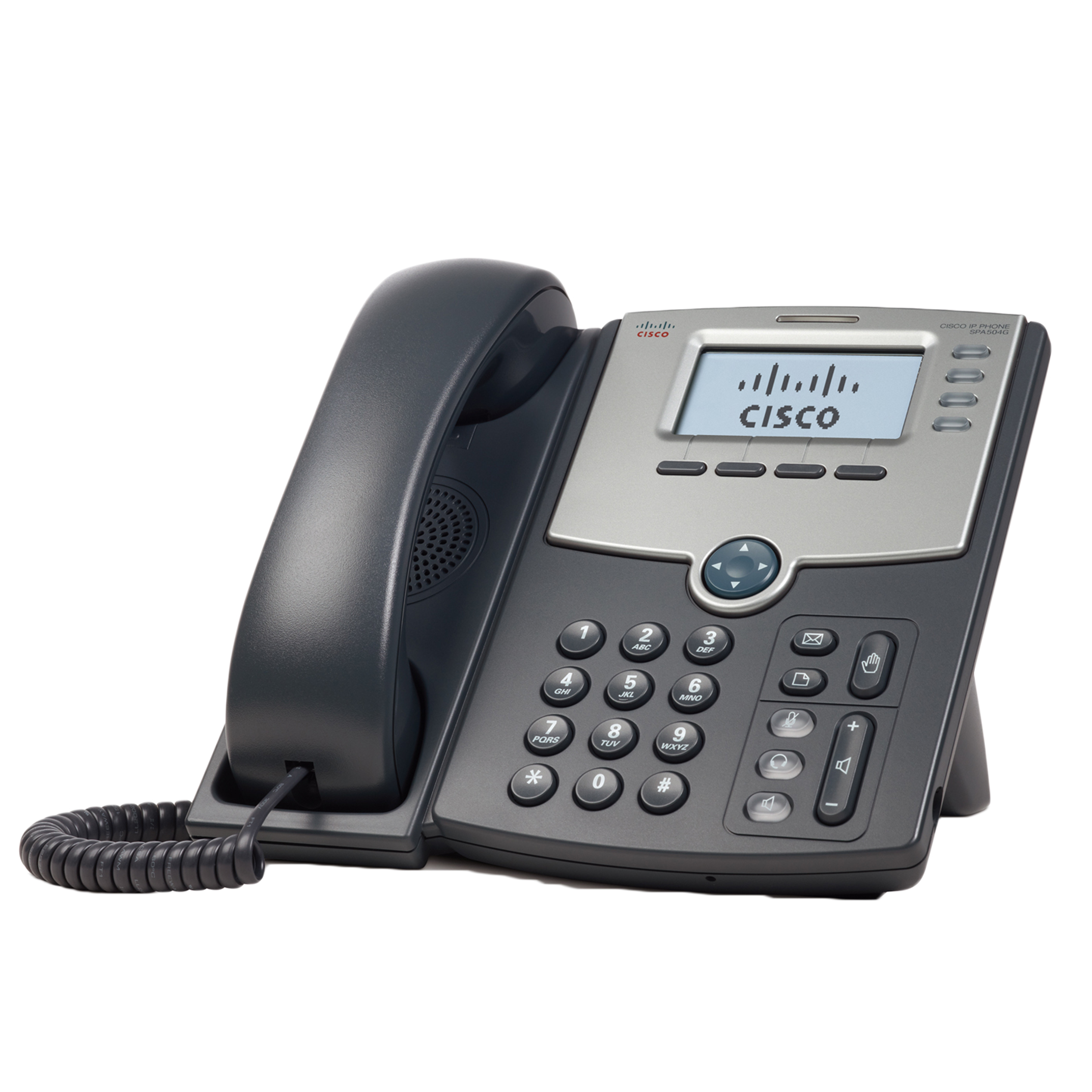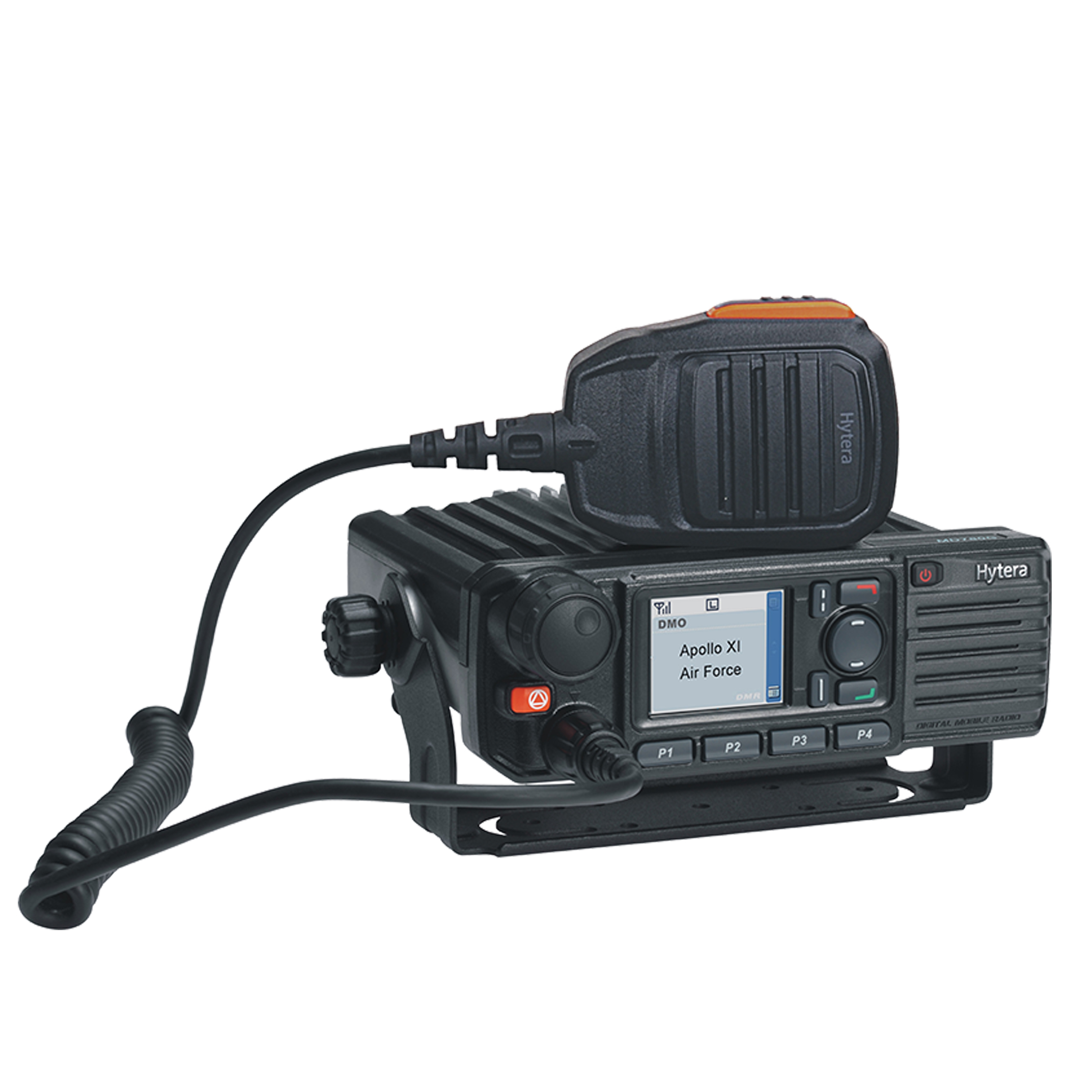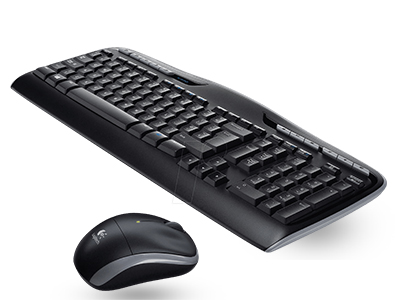Introduction to Telecommunication Engineering Centre (MTCTE)
The Telecommunication Engineering Centre (TEC) is the technical arm of the Department of Telecommunications (DoT) under the Ministry of Communications, Government of India. Established to provide technical support and standardization in the telecom sector, TEC plays a vital role in shaping India’s telecommunications infrastructure.
Its primary functions include formulating specifications and standards for telecom equipment, ensuring compliance through rigorous testing and certification, and fostering innovation by supporting research and development. TEC works to ensure interoperability, quality, and safety in telecom networks while promoting indigenous technologies in alignment with national goals like “Make in India” and “Digital India.”
By bridging the gap between policy and implementation, TEC ensures the deployment of secure, reliable, and efficient communication systems across the country
What is Telecommunication Engineering Centre (TEC)
The Telecommunication Engineering Centre (TEC) is a pivotal institution under the Department of Telecommunications (DoT) of the Government of India, tasked with ensuring the reliability, safety, and interoperability of telecom equipment used in India. Here’s an in-depth look at what TEC is and its significance:
Organizational Role and Mandate
Technical Authority:
TEC serves as the primary technical wing that formulates standards, specifications, and testing protocols for telecom equipment. By establishing these benchmarks, TEC ensures that the equipment deployed across telecom networks meets the requisite safety and performance standards.
Certification and Compliance:
One of the central functions of TEC is to conduct mandatory testing and certification of telecom equipment. This process, commonly known as TEC Approval, is essential for verifying that products comply with the national technical standards and regulatory frameworks before they can be marketed or deployed in Indian telecom networks.
Interoperability and Network Integrity:
By rigorously testing devices for parameters like electromagnetic compatibility (EMC), safety, and performance, TEC ensures that all telecommunications devices and components work seamlessly together, thereby safeguarding the integrity and reliability of the overall telecom infrastructure.
Key Functions of TEC
1. Standards Development:
• Specification Formulation: TEC develops detailed specifications for telecom equipment that manufacturers must adhere to. These standards cover various aspects including safety, performance, and security.
• Global Benchmarking: The centre aligns its specifications with international norms where applicable, while also considering local requirements unique to India's telecom ecosystem.
2. Testing and Certification:
• Laboratory Testing: TEC operates or accredits testing facilities where telecom equipment undergoes comprehensive assessments. These tests evaluate electrical safety, radio frequency performance, electromagnetic interference (EMI), and other critical parameters.
• Certification Process: Once the equipment passes the mandated tests, it is granted TEC certification. This approval is mandatory for telecom devices to ensure they are safe for use in telecom networks.
3. Regulation and Policy Implementation:
• Policy Interface: TEC plays a significant role in the formulation and execution of telecom regulations in India. It acts as a bridge between policymakers and industry stakeholders, ensuring that technological advancements are in line with regulatory standards.
• Security and Quality Assurance: By enforcing stringent quality control measures, TEC also contributes to national security by preventing the introduction of substandard or potentially insecure devices into critical telecommunications infrastructure.
4. Promotion of Indigenous Manufacturing:
• Encouraging Local Innovation: TEC’s certification processes support the “Make in India” initiative by ensuring that locally manufactured telecom products meet high global standards, which in turn fosters innovation and competitive manufacturing practices within the country.
Significance in the Telecom Ecosystem
• Consumer and Network Safety: Through its rigorous approval and testing procedures, TEC ensures that telecom equipment does not compromise network stability or public safety.
• Economic Impact: By regulating the quality and safety of telecom equipment, TEC helps foster trust in the telecom industry, which is crucial for the country’s economic development and digital transformation initiatives.
• International Standards Compliance: TEC-approved products not only secure domestic telecom networks but also help maintain India’s credibility in the global market, ensuring that products are up to international quality and performance benchmarks.
Mandatory Testing & Certification Of Telecommunication Equipment (MTCTE)
Products Under Phase 1 of MTCTE:
Search Products Under Phase 1 TEC Aprroval:
| S. No. | Essential Requirements/ Product Name | Product/Variant Name | MTCTE Phase | Mandatory Date of Certification |
|---|---|---|---|---|
| 1 | ISDN Customer Premises Equipment | ISDN Gateway | Phase 1 | 2019-10-01 |
| 2 | 2- Wire Telephone Equipment | CLIP Phone | Phase 1 | 2019-10-01 |
| 3 | 2- Wire Telephone Equipment | NSD or ISD Payphone | Phase 1 | 2019-10-01 |
| 4 | 2- Wire Telephone Equipment | Terminals for connecting to PSTN | Phase 1 | 2019-10-01 |
| 5 | ISDN Customer Premises Equipment | Multipoint Conferencing Server | Phase 1 | 2019-10-01 |
| 6 | ISDN Customer Premises Equipment | ISDN NT-1 Network Termination | Phase 1 | 2019-10-01 |
| 7 | ISDN Customer Premises Equipment | ISDN Terminal | Phase 1 | 2019-10-01 |
| 8 | ISDN Customer Premises Equipment | ISDN Terminal Adapter | Phase 1 | 2019-10-01 |
| 9 | 2- Wire Telephone Equipment | 2-Line Feature Phone | Phase 1 | 2019-10-01 |
| 10 | 2- Wire Telephone Equipment | Coin Box Telephone | Phase 1 | 2019-10-01 |
| 11 | 2- Wire Telephone Equipment | Coin Box Telephone - Table Top Interface | Phase 1 | 2019-10-01 |
| 12 | 2- Wire Telephone Equipment | Electronic Telephone Instrument | Phase 1 | 2019-10-01 |
| 13 | 2- Wire Telephone Equipment | Executive Telephone Systems | Phase 1 | 2019-10-01 |
| 14 | 2- Wire Telephone Equipment | Key Telephone Systems | Phase 1 | 2019-10-01 |
| 15 | 2- Wire Telephone Equipment | Key Telephone Systems with proprietary interface | Phase 1 | 2019-10-01 |
| 16 | G3 Fax Machine | FAX machine with handset | Phase 1 | 2019-10-01 |
| 17 | G3 Fax Machine | FAX machine without handset | Phase 1 | 2019-10-01 |
| 18 | Modem | V.90 or V.92 or V.21 to V.34 Modem | Phase 1 | 2019-10-01 |
| 19 | Cordless Telephone | Cordless Telephone | Phase 1 | 2019-10-01 |
| 20 | Private Automatic Branch Exchange | Private Automatic Branch Exchange | Phase 1 | 2019-10-01 |
| 21 | ISDN Customer Premises Equipment | PC card based ISDN Terminal | Phase 1 | 2019-10-01 |
Products Under Phase 2 of MTCTE:
Search Products Under Phase 2 TEC Aprroval:
| S. No. | Essential Requirements/ Product Name | Product/Variant Name | MTCTE Phase | Mandatory Date of Certification |
|---|---|---|---|---|
| 1 | Feedback Device | Feedback Device | Phase 2 | 2020-10-01 |
| 2 | Transmission Terminal Equipment-1 | Multiplexing Equipment | Phase 2 | 2020-10-01 |
| 3 | Transmission Terminal Equipment-2 | SDH (Synchronous Digital Hierarchy) Equipment | Phase 2 | 2020-10-01 |
| 4 | PON (Passive Optical Network) Family of Broadband Equipment |
PON ONT (Optical Network Terminal) | Phase 2 | 2020-10-01 |
| 5 | PON (Passive Optical Network) Family of Broadband Equipment |
PON ONU (Optical Network Unit) | Phase 2 | 2020-10-01 |
| 6 | PON (Passive Optical Network) Family of Broadband Equipment |
PON OLT (Optical Line Terminal) | Phase 2 | 2020-10-01 |
Products Under Phase 3 of MTCTE:
Search Products Under Phase 3 TEC Aprroval:
| S. No. | Essential Requirements/ Product Name | Product/Variant Name | MTCTE Phase | Mandatory Date of Certification |
|---|---|---|---|---|
| 1 | Equipments Operating in 2.4 GHz and 5 GHz Band |
PTP PMP Wireless Access Equipment 2.4 or 5 GHz | Phase 3 | 2024-01-01 |
| 2 | Equipments Operating in 2.4 GHz| and 5 GHz Band |
WLAN Controller Equipment | Phase 3 | 2024-01-01 |
| 3 | End Point Device for Environmental Monitoring |
End Point Device for Environmental Monitoring | Phase 3 | 2024-01-01 |
| 4 | Repeater for Cellular Network | GSM and WCDMA Repeater | Phase 3 | 2024-04-01 |
| 5 | Repeater for Cellular Network | GSM Repeater | Phase 3 | 2024-04-01 |
| 6 | Repeater for Cellular Network | GSM WCDMA and LTE Repeater | Phase 3 | 2024-04-01 |
| 7 | Base Station for Cellular Network | NodeB for WCDMA | Phase 3 | 2024-08-01 |
| 8 | Compact Cellular Network | BTS CCN | Phase 3 | 2024-01-01 |
| 9 | Compact Cellular Network | eNodeB CCN | Phase 3 | 2024-01-01 |
| 10 | Compact Cellular Network | NodeB CCN | Phase 3 | 2024-01-01 |
| 11 | Tracking Device | Asset Tracking Device | Phase 3 | 2024-01-01 |
| 12 | Tracking Device | Human Tracking Device | Phase 3 | 2024-01-01 |
| 13 | Tracking Device | Pet Tracking Device | Phase 3 | 2024-01-01 |
| 14 | Tracking Device | Standalone tracking device for Vehicle | Phase 3 | 2024-01-01 |
| 15 | Smart Electricity Meter | Smart Electricity Meter | Phase 3 | 2024-10-01 |
| 16 | IoT (Internet of Things) Gateway | IoT Gateway | Phase 3 | 2024-01-01 |
| 17 | Equipments Operating in 2.4 GHz and 5 GHz Band |
Wifi Access Points and CPE (Customer Premises Equipment) |
Phase 3 | 2024-01-01 |
| 18 | Repeater for Cellular Network | LTE (Long Term Evolution) Repeater | Phase 3 | 2024-04-01 |
| 19 | Repeater for Cellular Network | WCDMA (Wideband Code Division Multiple Access) Repeater |
Phase 3 | 2024-04-01 |
| 20 | Repeater for Cellular Network | WCDMA (Wideband Code Division Multiple Access) and LTE Repeater |
Phase 3 | 2024-04-01 |
| 21 | Base Station for Cellular Network | BTS with AAS (Advanced Antenna Systems) | Phase 3 | 2024-08-01 |
| 22 | Base Station for Cellular Network | BTS (Base Transceiver Station ) for GSM (Global System for Mobile Communication) |
Phase 3 | 2024-08-01 |
| 23 | Base Station for Cellular Network | eNodeB for LTE (Long Term Evolution) | Phase 3 | 2024-08-01 |
| 24 | Base Station for Cellular Network | BTS with MSR (Multi-Standard Radio) up to 4G | Phase 3 | 2024-08-01 |
Products Under Phase 4 of MTCTE:
Search Products Under Phase 4 TEC Aprroval:
| S. No. | Essential Requirements/ Product Name | Product/Variant Name | MTCTE Phase | Mandatory Date of Certification |
|---|---|---|---|---|
| 1 | VHF( Very High Frequency) UHF (Ultra High Frequency) Radio System Equipment |
VHF UHF Base Station – Baseband plus Radio | Phase 4 | 2024-08-01 |
| 2 | VHF( Very High Frequency) UHF (Ultra High Frequency) Radio System Equipment |
VHF UHF Base Station – Radio Only | Phase 4 | 2024-08-01 |
| 3 | VHF( Very High Frequency) UHF (Ultra High Frequency) Radio System Equipment |
VHF UHF Baseband Equipment without Radio | Phase 4 | 2024-08-01 |
| 4 | VHF( Very High Frequency) UHF (Ultra High Frequency) Radio System Equipment |
VHF UHF Fixed Station | Phase 4 | 2024-08-01 |
| 5 | VHF( Very High Frequency) UHF (Ultra High Frequency) Radio System Equipment |
VHF UHF Handheld Portable Stations | Phase 4 | 2024-08-01 |
| 6 | VHF( Very High Frequency) UHF (Ultra High Frequency) Radio System Equipment |
VHF UHF Mobile Stations | Phase 4 | 2024-08-01 |
| 7 | IP (Internet Protocol) Security Equipment | Unified Threat Management Equipment | Phase 4 | 2024-08-01 |
| 8 | LAN (Local Area Network) Switch | L3 LAN Switch | Phase 4 | 2024-08-01 |
| 9 | LAN (Local Area Network) Switch | MPLS (Multiprotocol Label Switching) TP (Transport Profile) CEN (Carrier Ethernet Network) Switch |
Phase 4 | 2024-08-01 |
| 10 | LAN (Local Area Network) Switch | L2 Unmanaged Switch | Phase 4 | 2024-08-01 |
| 11 | Radio Broadcast Receiver RBR | All Motor vehicle RBRs requiring external power | Phase 4 | |
| 12 | Radio Broadcast Receiver RBR | Other devices having RBR interface | Phase 4 | |
| 13 | Radio Broadcast Receiver RBR | All RBRs driven with inbuilt power source | Phase 4 | |
| 14 | Mobile Radio Trunking System | MRTS Base Station - Radio Only | Phase 4 | 2024-08-01 |
| 15 | Mobile Radio Trunking System | MRTS Baseband Equipment without Radio | Phase 4 | 2024-08-01 |
| 16 | Mobile Radio Trunking System | MRTS Fixed Station | Phase 4 | 2024-08-01 |
| 17 | Mobile Radio Trunking System | MRTS Handheld Portable Station | Phase 4 | 2024-08-01 |
| 18 | Mobile Radio Trunking System | MRTS Mobile Station | Phase 4 | 2024-08-01 |
| 19 | Conferencing Equipment | Audio Conference Facility Device | Phase 4 | 2024-01-01 |
| 20 | Conferencing Equipment | Multi Line Telephone System | Phase 4 | 2024-01-01 |
| 21 | Media Gateway | Line Media Gateway | Phase 4 | 2024-01-01 |
| 22 | Media Gateway | Media Gateway | Phase 4 | 2024-01-01 |
| 23 | Media Gateway | Media Gateway for CPE | Phase 4 | 2024-01-01 |
| 24 | Signalling Gateway | Signalling Gateway | Phase 4 | 2024-01-01 |
| 25 | Session Border Controller | Session Border Controller | Phase 4 | 2024-01-01 |
| 26 | Softswitch | Softswitch | Phase 4 | 2024-01-01 |
| 27 | Satellite Communication Equipment | Satellite Amplifier | Phase 4 | 2024-10-01 |
| 28 | Satellite Communication Equipment | Satellite Baseband Mod or Demod or Controller | Phase 4 | 2024-10-01 |
| 29 | Satellite Communication Equipment | Satellite Baseband Modem | Phase 4 | 2024-10-01 |
| 30 | Satellite Communication Equipment | Satellite BUC (Block Up Converter) | Phase 4 | 2024-10-01 |
| 31 | PTP (Point to Point) PMP (Point to Multi Point) Microwave Fixed Radio Systems |
PTP or PMP Split MW Outdoor Unit | Phase 4 | 2024-08-01 |
| 32 | PTP (Point to Point) PMP (Point to Multi Point) Microwave Fixed Radio Systems |
PTP or PMP Full Outdoor Microwave Systems | Phase 4 | 2024-08-01 |
| 33 | PTP (Point to Point) PMP (Point to Multi Point) Microwave Fixed Radio Systems |
PTP or PMP Split MW Indoor Unit | Phase 4 | 2024-08-01 |
| 34 | DSL(Digital Subscriber Line) Equipments | DSLAM | Phase 4 | 2024-01-01 |
| 35 | DSL(Digital Subscriber Line) Equipments | DSL Modem | Phase 4 | 2024-01-01 |
| 36 | HF (High Frequency) Radio | HF Base Station - Baseband plus Radio | Phase 4 | 2024-04-01 |
| 37 | HF (High Frequency) Radio | HF Base Station - Radio Only | Phase 4 | 2024-04-01 |
| 38 | HF (High Frequency) Radio | HF Baseband Equipment without Radio | Phase 4 | 2024-04-01 |
| 39 | HF (High Frequency) Radio | HF Fixed Station | Phase 4 | 2024-04-01 |
| 40 | HF (High Frequency) Radio | HF Handheld Portable Stations | Phase 4 | 2024-04-01 |
| 41 | Satellite Communication Equipment | "Satellite Baseband Modem Controller" | Phase 4 | 2024-10-01 |
| 42 | HF (High Frequency) Radio | HF Mobile Stations | Phase 4 | 2024-04-01 |
| 43 | Mobile Radio Trunking System | MRTS Base Station – Baseband plus Radio | Phase 4 | 2024-08-01 |
| 44 | PTP (Point to Point) PMP (Point to Multi Point) Microwave Fixed Radio Systems |
PTP/PMP Split MW System | Phase 4 | 2024-08-01 |
| 45 | Satellite Communication Equipment | Satellite IF Transreceiver | Phase 4 | 2024-10-01 |
| 46 | Satellite Communication Equipment | Satellite Optimisation Equipment | Phase 4 | 2024-10-01 |
| 47 | Satellite Communication Equipment | Satellite Radio Frequency Transceiver | Phase 4 | 2024-10-01 |
| 48 | Router | Cloud Control Capable Router | Phase 4 | 2024-08-01 |
| 49 | Precision Timing Protocol Grand Master Equipment | Precision Timing Protocol Grand Master Equipment | Phase 4 | 2024-01-01 |
| 50 | Mobile Management Entity | MME with connectivity to MSC SGSN | Phase 4 | 2024-01-01 |
| 51 | Mobile Management Entity | MME for LTE | Phase 4 | 2024-01-01 |
| 52 | Cell Broadcast Centre | CBC for GSM | Phase 4 | 2024-01-01 |
| 53 | Cell Broadcast Centre | CBC for LTE or LTE-A | Phase 4 | 2024-01-01 |
| 54 | Cell Broadcast Centre | CBC For UMTS | Phase 4 | 2024-01-01 |
| 55 | IP Multimedia Conferencing Equipment | IP Multimedia Conferencing Equipment | Phase 4 | 2024-01-01 |
| 56 | MSC or MSC-S or GMSC or GMSC-S including VLR | MSC-S or GMSC-S | Phase 4 | 2024-01-01 |
| 57 | MSC or MSC-S or GMSC or GMSC-S including VLR | MSC or GMSC including VLR for GSM | Phase 4 | 2024-01-01 |
| 58 | MSC or MSC-S or GMSC or GMSC-S including VLR | MSC or GMSC including VLR for WCDMA | Phase 4 | 2024-01-01 |
| 59 | Infiniband Switch | Infiniband Switch | Phase 4 | 2024-01-01 |
| 60 | Optical Fibre Cable | Hybrid Cable - Optical and Metallic | Phase 4 | 2024-01-01 |
| 61 | Optical Fibre Cable | Optical Fibre Cable - ADSS on Aerial alignment | Phase 4 | 2024-01-01 |
| 62 | Optical Fibre Cable | Optical Fibre Cable - ADSS along Power line | Phase 4 | 2024-01-01 |
| 63 | Optical Fibre Cable | Optical Fibre Cable - DSA | Phase 4 | 2024-01-01 |
| 64 | Optical Fibre Cable | Optical Fibre Cable - Duct | Phase 4 | 2024-01-01 |
| 65 | Optical Fibre Cable | Optical Fibre Cable - In home | Phase 4 | 2024-01-01 |
| 66 | Optical Fibre Cable | Optical Fibre Cable - Indoor | Phase 4 | 2024-01-01 |
| 67 | Optical Fibre Cable | Optical Fibre Cable - Micro-Duct | Phase 4 | 2024-01-01 |
| 68 | Satellite Communication Equipment | Satellite LNB(Low Noise Block downconverter) | Phase 4 | 2024-10-01 |
| 69 | SCP (Service Control Point) | SCP | Phase 4 | 2024-01-01 |
| 70 | IP (Internet Protocol) Security Equipment | Intrusion Detection System Equipment | Phase 4 | 2024-08-01 |
| 71 | IP (Internet Protocol) Security Equipment | Intrusion Prevention System Equipment | Phase 4 | 2024-08-01 |
| 72 | Router | IPV4 (Internet Protocol v4) Router | Phase 4 | 2024-08-01 |
| 73 | OMC(Operations and Maintenance Center) or EMS (Element Management Systems) or NMS (Network Management Systems) or OSS (Operations Support System) |
NMS | Phase 4 | 2024-01-01 |
| 74 | SGSN (Serving GPRS Support Node) or GGSN (Gateway GPRS Support Node) |
SGSN For LTE | Phase 4 | 2024-01-01 |
| 75 | SGSN (Serving GPRS Support Node) or GGSN (Gateway GPRS Support Node) |
GGSN | Phase 4 | 2024-01-01 |
| 76 | SGSN (Serving GPRS Support Node) or GGSN (Gateway GPRS Support Node) |
SGSN For WCDMA | Phase 4 | 2024-01-01 |
| 77 | HLR (Home Location Register) AUC (Authentication Cente) HSS (Home Subscriber Server) |
HLR or AUC | Phase 4 | 2024-01-01 |
| 78 | SGSN (Serving GPRS Support Node) or GGSN (Gateway GPRS Support Node) |
SGSN For GSM | Phase 4 | 2024-01-01 |
| 79 | SMLC (Serving Mobile Location Center) or eSMLC (Evolved Serving Mobile Location Center ) |
SMLC for WCDMA | Phase 4 | 2024-01-01 |
| 80 | SMLC (Serving Mobile Location Center)or eSMLC (Evolved Serving Mobile Location Center ) |
eSMLC for LTE | Phase 4 | 2024-01-01 |
| 81 | GMLC (Gateway Mobile Location Centre) | GMLC for LTE or LTE-A | Phase 4 | 2024-01-01 |
| 82 | BSC (Base Station Control) RNC (Radio Network Controller) | RNC for WCDMA | Phase 4 | 2024-01-01 |
| 83 | SMLC (Serving Mobile Location Center)or eSMLC (Evolved Serving Mobile Location Center ) |
SMLC for GSM | Phase 4 | 2024-01-01 |
| 84 | HLR (Home Location Register) AUC (Authentication Cente) HSS (Home Subscriber Server) |
HSS | Phase 4 | 2024-01-01 |
| 85 | OTA (Over-The-Air) and DM (Device Manager) or FOTA (Firmware Over-The-Air) |
OTA | Phase 4 | 2024-01-01 |
| 86 | LAN (Local Area Network) Switch | L2 LAN Switch | Phase 4 | 2024-08-01 |
| 87 | EIR (Equipment Identity Register) | EIR for LTE | Phase 4 | 2024-01-01 |
| 88 | Optical Fibre Cable | Optical Groung Wire -OPGW | Phase 4 | 2024-01-01 |
| 89 | SMSC (Short Message Service Center) | SMSC | Phase 4 | 2024-01-01 |
| 90 | S-GW (Serving Gateway) or P-GW (Packet Data Network Gateway) |
P-Gateway | Phase 4 | 2024-01-01 |
| 91 | EIR (Equipment Identity Register) | EIR for GSM or WCDMA | Phase 4 | 2024-01-01 |
| 92 | GMLC (Gateway Mobile Location Centre) | GMLC for GSM or WCDMA | Phase 4 | 2024-01-01 |
| 93 | OMC(Operations and Maintenance Center) or EMS (Element Management Systems) or NMS (Network Management Systems) or OSS (Operations Support System) |
OMC or EMS | Phase 4 | 2024-01-01 |
| 94 | S-GW (Serving Gateway) or P-GW (Packet Data Network Gateway) |
S-Gateway | Phase 4 | 2024-01-01 |
| 95 | SIM (Subscriber Identity Module) | CSIM (CDMA SIM) | Phase 4 | 2024-08-01 |
| 96 | Satellite Communication Equipment | Satellite LNA (Low Noise Amplifier) | Phase 4 | 2024-10-01 |
| 97 | Satellite Communication Equipment | VSAT (Very Small Aperture Terminal) Terminals | Phase 4 | 2024-10-01 |
| 98 | IP (Internet Protocol) Security Equipment | Firewall Equipment | Phase 4 | 2024-08-01 |
| 99 | Router | IPV6 (Internet Protocol v6) Router | Phase 4 | 2024-08-01 |
| 100 | Router | MPLS (Multiprotocol Label Switching) Router | Phase 4 | 2024-08-01 |
| 101 | Router | BNG (Broadband Network Gateway) or BRAS (Broadband Remote Access Server) Router |
Phase 4 | 2024-08-01 |
| 102 | BSC (Base Station Control) RNC (Radio Network Controller) | BSC for GSM | Phase 4 | 2024-01-01 |
| 103 | Optical Fibre Cable | Optical Fibre Cable – Direct Buried | Phase 4 | 2024-01-01 |
| 104 | Optical Fibre Cable | Optical Fibre Cable – Indoor/Outdoor | Phase 4 | 2024-01-01 |
| 105 | Optical Fibre Cable | Optical Fibre Cable – Access Outdoor | Phase 4 | 2024-01-01 |
| 106 | Transmission Terminal Equipment-2 | DWDM (Dense wavelength-division multiplexing) Equipment |
Phase 4 | 2024-01-01 |
| 107 | Transmission Terminal Equipment-3 | Digital Cross Connect | Phase 4 | 2024-01-01 |
| 108 | Optical Fibre - Single Mode | Optical Fibre - G.652.D | Phase 4 | 2024-01-01 |
| 109 | Optical Fibre - Single Mode | Optical Fibre - G.655 | Phase 4 | 2024-01-01 |
| 110 | Optical Fibre - Single Mode | Optical Fibre - G.656 | Phase 4 | 2024-01-01 |
| 111 | Optical Fibre - Single Mode | Optical Fibre - G.657. A1 | Phase 4 | 2024-01-01 |
| 112 | Optical Fibre - Single Mode | Optical Fibre - G.657. A2 | Phase 4 | 2024-01-01 |
| 113 | Optical Fibre - Single Mode | Optical Fibre - G.657. B3 | Phase 4 | 2024-01-01 |
| 114 | Optical Fibre - Single Mode | Optical Fibre -G.654.D | Phase 4 | 2024-01-01 |
| 115 | Optical Fibre - Single Mode | Optical Fibre -G.654.E | Phase 4 | 2024-01-01 |
| 116 | SIM (Subscriber Identity Module) | eUICC – Consumer (GSMA compliance) / eSIM-Consumer |
Phase 4 | 2024-08-01 |
| 117 | SIM (Subscriber Identity Module) | eUICC -M2M (Non-GSMA compliance) | Phase 4 | 2024-08-01 |
| 118 | OTA (Over-The-Air) and DM (Device Manager) or FOTA (Firmware Over-The-Air) |
DM or FOTA | Phase 4 | 2024-01-01 |
| 119 | SIM (Subscriber Identity Module) | SIM- Pluggable form factor | Phase 4 | 2024-08-01 |
| 120 | SIM (Subscriber Identity Module) | USIM- Pluggable form factor | Phase 4 | 2024-08-01 |
| 121 | SIM (Subscriber Identity Module) | UICC based ISIM- Pluggable form factor | Phase 4 | 2024-08-01 |
| 122 | SIM (Subscriber Identity Module) | eUICC-M2M (GSMA compliance) / eSIM-M2M | Phase 4 | 2024-08-01 |
Products Under Phase 5 of MTCTE:
Search Products Under Phase 5 TEC Aprroval:
| S. No. | Essential Requirements/ Product Name | Product/Variant Name | MTCTE Phase | Mandatory Date of Certification |
|---|---|---|---|---|
| 1 | Hypervisor | Hypervisor | Phase 5 | 2024-10-01 |
| 2 | Base station for cellular network for 5G | Active Antenna System-OTA | Phase 5 | 2024-10-01 |
| 3 | 5G Core | AMF (Access and Mobility Management Function ) | Phase 5 | 2024-07-01 |
| 4 | 5G Core | SMF (Session Management Function) | Phase 5 | 2024-07-01 |
| 5 | 5G Core | UPF (User Plane Function) | Phase 5 | 2024-07-01 |
| 6 | 5G Core | UDM (Unified Data Management) | Phase 5 | 2024-07-01 |
| 7 | IP (Internet Protocol)Terminal | SIP Terminal | Phase 5 | 2024-10-01 |
| 8 | 5G Core | AuSF (The Authentication Server Function) | Phase 5 | 2024-07-01 |
| 9 | 5G Core | NSSF (Network Slice Selection Function) | Phase 5 | 2024-07-01 |
| 10 | 5G Core | SMSF (Short Message Service Function) | Phase 5 | 2024-07-01 |
| 11 | 5G Core | PCF (Policy Control Function) | Phase 5 | 2024-07-01 |
| 12 | 5G Core | CHF (Charging Function) | Phase 5 | 2024-07-01 |
| 13 | 5G Core | NEF (Network Exposure Function) | Phase 5 | 2024-07-01 |
| 14 | E-band Fixed Radio Relay System | E-Band MW Outdoor System plus Indoor System | Phase 5 | 2024-07-01 |
| 15 | E-band Fixed Radio Relay System | E-Band MW Full Outdoor System | Phase 5 | 2024-07-01 |
| 16 | Base station for cellular network for 5G | Base Station 5G NR Type 1C | Phase 5 | 2024-10-01 |
| 17 | Base station for cellular network for 5G | Base Station 5G NR Type 1H | Phase 5 | 2024-10-01 |
| 18 | Base station for cellular network for 5G | Base Station 5G NR Type 1O | Phase 5 | 2024-10-01 |
| 19 | Base station for cellular network for 5G | Base Station 5G NR Type 2O | Phase 5 | 2024-10-01 |
| 20 | Base station for cellular network for 5G | BTS with Multi Standard Radio | Phase 5 | 2024-10-01 |
| 21 | Base station for cellular network for 5G | Hybrid Active Antenna System | Phase 5 | 2024-10-01 |
| 22 | 5G Core | UDR (Unified Data Repository) | Phase 5 | 2024-07-01 |
| 23 | 5G Core | BSF (Binding Support Function) | Phase 5 | 2024-07-01 |
| 24 | Converged Multi service Application Access Equipment (C-MSAAE) |
C-MSAAE | Phase 5 | 2024-07-01 |
Products Under Phase 6 of MTCTE:
Search Products Under Phase 6 TEC Aprroval:
| S. No. | Essential Requirements/ Product Name | Product/Variant Name | MTCTE Phase | Mandatory Date of Certification |
|---|---|---|---|---|
| 1 | Satellite Communication Equipment | NGSO Integrated Gateway | Phase 6 | 2025-08-24 |
| 2 | IP Security Equipment | Network Security Analytics Equipment-Managed | Phase 6 | 2025-08-24 |
| 3 | LAN Switch | Storage Area Network (SAN) Switch | Phase 6 | 2025-08-24 |
| 4 | LAN Switch | Fabric Interconnect Switch | Phase 6 | 2025-08-24 |
| 5 | IP Security Equipment | Network Security Management Equipment | Phase 6 | 2025-08-24 |
| 6 | IP Security Equipment | Network Security Analytics Equipment-Unmanaged | Phase 6 | 2025-08-24 |
| 7 | IP Security Equipment | Content Security Equipment | Phase 6 | 2025-08-24 |
| 8 | IP Security Equipment | DDoS Protection Equipment | Phase 6 | 2025-08-24 |
| 9 | IP Security Equipment | Malware Analysis Equipment | Phase 6 | 2025-08-24 |
| 10 | IP Security Equipment | Web Application Firewall | Phase 6 | 2025-08-24 |
| 11 | Satellite Communication Equipment | NGSO User Terminals | Phase 6 | 2025-08-24 |
| 12 | Fixed Wireless Phones | Fixed Wireless Phone with Voice Facility only | Phase 6 | 2025-08-24 |
| 13 | Fixed Wireless Phones | Fixed Wireless Phone with VOICE and DATA Facility | Phase 6 | 2025-08-24 |
| 14 | Cellular Customer Premises Equipment | Cellular Customer Premises Equipment | Phase 6 | 2025-08-24 |
Required Documentation For MTCTE
List of documents generally required for the Mandatory Testing and Certification of Telecommunication Equipment (MTCTE) under India’s Telecommunication Engineering Center (TEC) scheme. The exact documents may vary slightly depending on the product category and phase of testing, but the common required documents typically include:
| S. No. | Document Name | Details |
|---|---|---|
| 1 | Application Form | Filled online on the MTCTE portal (https://mtcte.tec.gov.in/) |
| 2 | Authorization Letter | If the application is filed by an authorized Indian representative (AIR) on behalf of a foreign OEM |
| 3 | Company Registration document | |
| 4 | Product Datasheet / Technical Brochure | Detailed product specs, model numbers, and functionality |
| 5 | Circuit Diagram / Block Diagram | Clear and labeled diagram showing major components and functions |
| 6 | Label / Marking Details | Image or sample of product label showing model, brand, etc. |
| 7 | Test Report(s) | From designated Conformity Assessment Body (CAB) or BIS/IEC accredited labs |
| 8 | Bill of Materials (BoM) | Including details of critical components |
| 9 | Quality Manual or Manufacturing Process Overview |
Optional but sometimes requested for compliance clarity |
| 10 | Safety and EMC Reports (if applicable) | For products under specific safety/EMC regulatory scopes |
| 11 | User Manual | Product operating instructions and warranty info |
| 12 | Photographs of Equipment | Clear, high-resolution images showing front, back, and ports |
| 13 | Copy of Importer Exporter Code (IEC) | If imported equipment |
| 14 | PAN Card and GST Certificate (India-based applicant) |
For authentication and financial tracking |
| 15 | Product Compliance Declaration (PCD) | Provided format by TEC, signed and stamped |
| 16 | Any Additional Test Reports for Optional Parameters (if claimed) |
For optional certification scope |
| 17 | Self-Declaration / Undertaking | As per TEC format confirming compliance and authenticity |
Process of TEC Certification (MTCTE)
Process of TEC Certification (MTCTE) for telecommunication equipment in India.
1 Registration Manufacturer or Authorized Indian Representative (AIR) registers on the MTCTE portal
2 Document Preparation Collect and prepare necessary documents (technical specs, test reports, declarations, product images, etc.)
3 Testing of Equipment Submit product samples to a TEC-designated Conformity Assessment Body (CAB) for testing as per Essential Requirements (ERs)
4 Receive Test Reports After successful testing, receive certified test reports from CAB
5 Online Application Submission Submit application via the MTCTE portal along with test reports, documents, and applicable fee
6 Application Scrutiny by TEC TEC reviews all submitted documents and test results. May raise queries or request clarifications if required
7 Response to Queries Applicant addresses any queries or corrections within the prescribed timeline
8 Certificate Issuance Upon successful evaluation, TEC grants the MTCTE Certificate of Compliance valid for 5 years
9 Labeling and Marketing After certification, product must carry TEC label before being sold or imported into India
Timeline
Detailed Information
Technical aspects - Safety EMC Telecom/Wireless
Market surveillance - Conditionally
Obligation - Mandatory
Factory inspection - No
Sample testing - Yes
Validity - 5 years
Product Scope:
- Two wire telecom equipment
- Modem
- G3 Fax equipment
- ISDN CPE
- Cordless telephone
- PBAX
